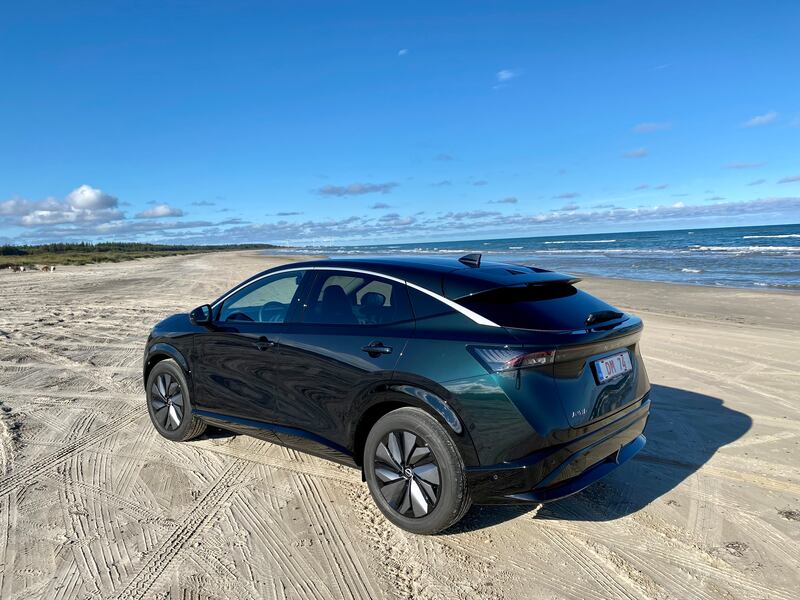When it comes to electric cars, Nissan executives may wonder if the gods are against them.
When the Leaf was launched back in 2010, it was something of a pioneer, offering a relatively affordable fully-electric family car to the mainstream market. It impressed us all at the time, picking up numerous awards, including European Car of the Year in 2011. Yet it landed in showrooms amid the global financial crisis, when people were distracted trying to keep a roof over their heads.
Surprisingly, Nissan took a decade to come up with a second act to its EV tale. Despite the delay, the plan seemed spot on: an all-electric crossover SUV promising 400km or more in range and a cabin to challenge the premium brands. It ticked all the market research trends.
I was in the melee that engulfed the new crossover when it was unveiled as a near-production concept car at the 2019 Tokyo Motor Show, and the level of excitement among Nissan staff there was palpable. This was no plug-in Qashqai.
READ MORE
In the interim, several rivals had taken to the EV stage, but while the Japanese brand had lost some EV momentum, the arrival of Ariya would put Nissan back in the race.
Then came Covid. The pandemic lockdown has been compounded by industry-wide chip shortages.
Now, after all the delays, the Ariya is set to land on these shores. Will it have the same sort of market success as the Qashqai?
First impressions are very positive. The car’s styling is sleek and modern, making a better fist of its front nose than most EV rivals, including many from premium brands.
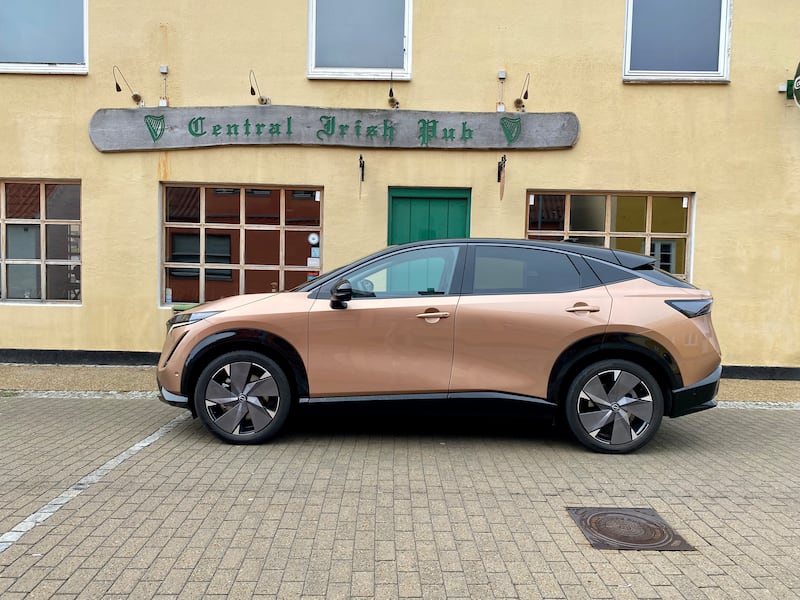
Clearly the Ariya has the VW ID.4, Hyundai Ioniq 5 and Kia EV6 in its sights, though its styled slightly more like a traditional SUV than any of those.
Inside, the Ariya is a world apart from what you might expect from the Japanese brand, even if your benchmark is the current Qashqai. A world apart from what we were used to from Nissan a decade ago, this is positively plush.
Following its counterparts in Korea, Nissan has opted to embrace haptic touch switches. These are flush to the surface but resonate when touched to give you an active sense of engaging them with your finger.
It’s very smart and certainly unclutters the cabin. Citroen has arguably led the way in bringing a sittingroom feel into the car, but others have embraced the trend with gusto, particularly with EVs where you don’t have to worry about transmission tunnels and the like. Nissan delivers here with aplomb.
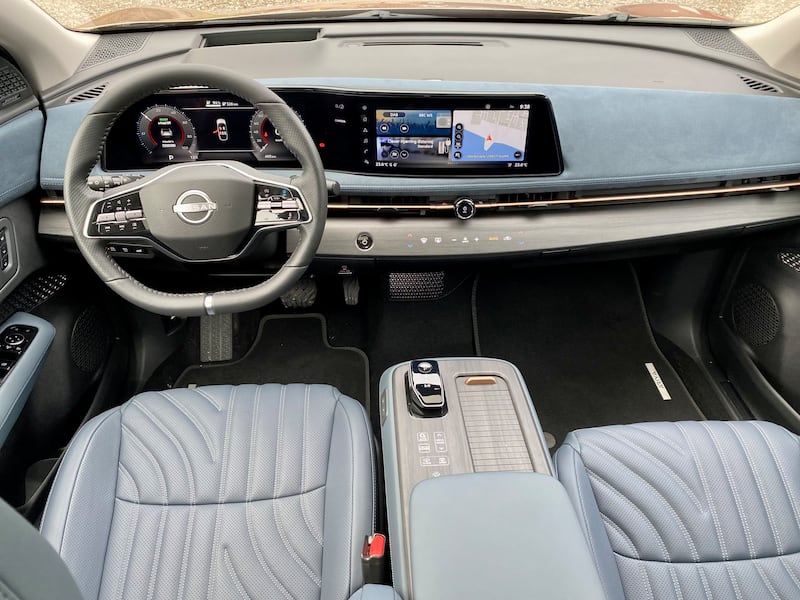
Some of the features on our test car seemed a little pointless, however. Like the powered opening and closing of a second glovebox housed in the middle of the dash; one that’s hardly out of reach for either driver or front-seat passenger. It’s a tech shtick too far.
Interior space is on a par with its arch-rivals and while the roof slopes to the rear, anyone 6ft or under won’t have any issues in the back seat. The bootspace might not match some rivals with its mass of 466 litres, but it’s actually more usable given the extended length.
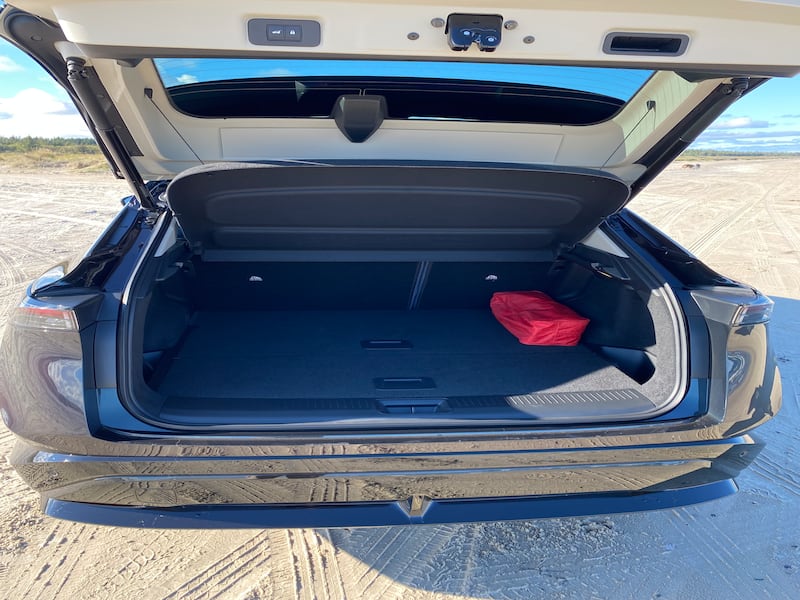
Two battery options are available: a 63kWh battery that delivers a range of 403km and an 87kWh battery offering a range of up to 532km. Those are both in two-wheel drive mode, but a third option is the 87kWh all-wheel drive “e-4orce” version.
The price for opting for that terribly contrived moniker is a reduction in range to 500km and a loss of 50 litres in bootspace, but the benefit is significantly better performance. The 0-100km/h time drops from 7.5 seconds to 5.7 seconds, power output rises to 225kW and 600Nm of torque, while towing capacity increases from 750kg to 1.5 tonnes.
Unfortunately, while the extra power initially impressed, our first drive in the 87kWh e4orce all-wheel drive model didn’t go to plan and the car’s power suddenly faded with the dash reporting an EV system failure.
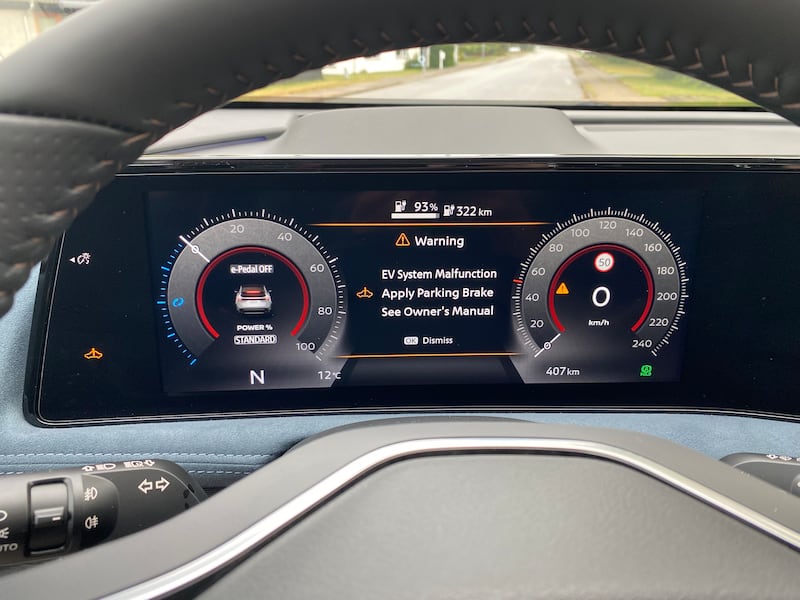
That cast a shadow over our experience with the car, but our second drive in the entry-level 63kWh battery version was without a problem.
Before our problem with the e4orce version, our test showed up the ESP (electronic stability programme) as a little intrusive on what were generally dry national roads and you’d have to go some way to make this big EV step out of line, which is a boon, of course. Despite the low centre of gravity, the tendency is still toward understeer, which isn’t surprising considering you are trying to redirect nearly 2 tonnes of metal sitting relatively high off the road.
The good news is that while there’s not a great deal of engagement from the steering, it is impressively responsive. That’s one of the high points of the Ariya’s driving traits. As are the brakes. Flipping between e-Pedal mode and regular coasting doesn’t detract from the stopping power and there’s none of the fade you sometimes get as cars move from regenerative mode to full calliper grip.
[ Kia’s Sportage plug-in hybrid is handsome and roomy — but surprisingly thirstyOpens in new window ]
[ This impressive estate is pretty much all the car you should ever needOpens in new window ]
On the smooth Danish main roads, the Ariya coasts along without a rattle or hum – or even a noticeable rumble from the tyres. The suspension matches the quietness of the cabin to deliver a very composed journey. Stick it up against poorly surfaced roads, and things get a good deal bumpier. The Ariya’s set-up isn’t best pleased with rutted roads.
In the battle over charging station plugs, Nissan seems to accept that CHAdeMO is the Betamax format and so the Ariya has bowed to convention and opted for a CCS format for Europe.
It means the Ariya can quick charge at speeds up to 130kW using its CCS charge port, so a 10 to 80 per cent charge takes about 35 minutes on the 63kWh version or 40 minutes for the larger battery version.
Prices start at €48,995 for the 63kWh version, while the higher-spec Evolve version pushes prices to €51,995. If you want the larger 87kWh battery, then the entry price is €63,995, with the Evolve touching towards €67,000.
Those prices are on a par with rivals, and judged against them it’s certainly competitive in terms of the offering.
Nissan should be on to a winner with the Ariya. It’s not as futuristic as the Ioniq 5, and it doesn’t make that break into the post-crossover era that the Hyundai manages to do. Nor does it have the dynamic driving flair of the Kia EV6. It is, however, arguably a better package than the VW ID.4, and as that’s Ireland’s best-selling EV right now it’s not a bad accolade to take away.
History teaches us that first movers are frequently not the ultimate winners and timing is everything. Yet I’m sure at Nissan HQ in Japan, they must be wondering how many ID.4 owners could be Ariya drivers if only they got their timings right.
